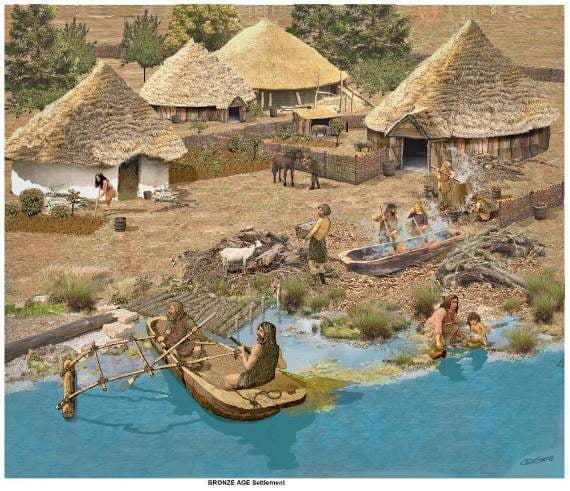MONMOUTH archaeologists are continuing to make remarkable discoveries as they oversee building projects along Wonastow Road.
During the digging of a flood attenuation pond for the Siltbusters development, a Bronze Age settlement which includes domestic huts – one probably a round house – has been radiocarbon dated at 2,552 years old. There were preserved timbers of the collapsed building with wattle and daub walls which were lightly covered with flood silts laid down from very slow-moving water. Scores of unopened hazel nuts (radiocarbon dated to 2,483 years old) were found in the brushwood floors of the houses; they were probably brought in during the late summer on the brushwood while some animal bone was also found (2,043 years before the present).
Found outside the house was a large spread of fire-cracked stones and pebbles which had been used as pot-boilers for cooking, (called a burnt mound) and a few sherds of rare Bronze Age pottery were recovered from its surface.
Also on the Siltbusters site and under the main building, a hearth was found containing animal bone and worked flints; it was radiocarbon dated to 4,883 years before the present, in the New Stone Age.
Another very important discovery was made in the Siltbusters attenuation pond and running under the hedge to the adjoining Barratt Homes & David Wilson Homes attenuation pond: there was a series of upright ‘stilts’ of structures, probably on the shore of the lake and resembling houses found in lake villages such as those at Glastonbury. The posts were radiocarbon dated from between 2,151 years to 4,173 years old. Most of these remains are preserved in situ under the ponds. The buildings may have been similar to the 5,000 year-old ‘crannog’ type of structure found on the lake bed at Jordan Way.
Nearby, on the Barratt Homes and David Wilson Homes housing site, the Monmouth unit carried out a rescue excavation on a Roman iron-working industry which was based on a paved working floor and which produced groups of Roman pottery including 2nd century Samian Ware with bones and large quantities of bloomery iron slag.
Back in the Barratt/ David Wilson Homes flood pond the sub-contracting unit APAC, working on the eastern side of the pond unearthed what may be part of a Roman vineyard.
On plot 275, of the Barratts Homes site a single upright post was found and radiocarbon dated to 5,930 years old.

Comments
This article has no comments yet. Be the first to leave a comment.